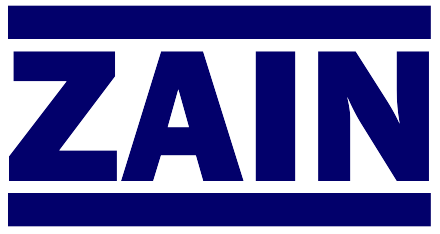Understanding Shear Rates: How Mixing Equipment Affects Product Texture
In the realm of industrial processing, especially within the food, pharmaceutical, and cosmetic sectors, achieving the desired product texture is paramount. A critical factor influencing texture is the shear rate applied during mixing. This article delves into the concept of shear rates, their impact on product texture, and how different mixing equipment can be optimized to achieve consistent and high-quality results.
What Is Shear Rate?
Shear rate refers to the rate at which adjacent layers of fluid move relative to each other, typically measured in reciprocal seconds (s⁻¹). In mixing processes, shear rate quantifies how quickly the fluid is being deformed by the applied force. Understanding shear rate is essential because it directly affects how ingredients interact and disperse and ultimately determines the final product's texture and stability.
The Relationship Between Shear Rate and Viscosity
Viscosity, the measure of a fluid's resistance to flow, is intrinsically linked to shear rate. Fluids can be categorized based on how their viscosity responds to changes in shear rate:
- Newtonian Fluids: Their viscosity remains constant regardless of the shear rate applied. Examples include water and mineral oils.
- Non-Newtonian Fluids: Their viscosity changes with varying shear rates. For instance, ketchup becomes less viscous (thinner) when shaken or squeezed, a behavior known as shear-thinning.
Understanding this relationship is crucial for selecting appropriate mixing equipment and parameters to achieve the desired product consistency.
High Shear vs. Low Shear Mixing: What's the Difference?
Mixing equipment can be broadly classified based on the shear forces they impart:
- High-Shear Mixers: These mixers apply intense energy to break down particles, emulsify liquids, and create homogeneous mixtures. They're ideal for applications requiring fine dispersions or emulsions, such as sauces, creams, and lotions.
- Low-Shear Mixers: These provide gentle mixing, suitable for blending delicate ingredients without damaging their structure. They're commonly used for mixing cake batters or folding in ingredients where maintaining the integrity of components is essential.
Choosing between high and low shear mixing depends on the product's requirements and the desired texture.
Impact of Shear Rate on Product Texture
Shear rate significantly influences the texture of the final product. For example:
- Creams and Lotions: High shear mixing ensures a smooth, uniform texture by effectively dispersing oil and water phases.
- Dairy Products: Controlling shear rates during mixing can affect the creaminess and mouthfeel of products like yogurt and cheese.
- Baked Goods: Overmixing (applying excessive shear) can lead to tough textures due to gluten overdevelopment, while undermixing may result in uneven crumb structures.
Therefore, optimizing shear rates during mixing is vital for achieving the desired texture and quality.
Equipment Design and Shear Rate Control
The design of mixing equipment plays a pivotal role in controlling shear rates:
- Rotor-Stator Mixers: These consist of a rotating impeller (rotor) and a stationary component (stator). The close clearance between them creates high shear zones, ideal for emulsification and homogenization.
- Impeller Design: The shape and size of impellers influence the flow patterns and shear rates within the mixing vessel. Selecting the appropriate impeller ensures efficient mixing without over-shearing.
- Variable Speed Drives: These allow operators to adjust the mixing speed, providing control over the shear rate to match specific process requirements.
By understanding and utilizing these design aspects, manufacturers can fine-tune their processes to achieve consistent product textures.
Case Study: High Shear Mixing in Cream Production
In cream production, achieving a smooth and stable emulsion is crucial. High shear mixers are employed to break down fat globules and uniformly disperse them within the aqueous phase. This process not only enhances the cream's texture but also improves its stability and shelf life. By adjusting the shear rate, manufacturers can control the creaminess and prevent phase separation, ensuring a high-quality product.
Managing Shear-Sensitive Ingredients
Some ingredients are sensitive to shear and can degrade or lose functionality when exposed to high shear rates. For instance:
- Proteins: Excessive shear can denature proteins, affecting the texture and nutritional value of the product.
- Starches: High shear can disrupt starch granules, leading to undesirable viscosity changes.
In such cases, it's essential to select mixing equipment and parameters that provide the necessary mixing without compromising ingredient integrity.
Shear Rate Considerations in Scale-Up Processes
Scaling up from laboratory to production scale presents challenges in maintaining consistent shear rates. Factors such as equipment geometry, mixing speed, and batch size can influence shear conditions. To ensure product consistency during scale-up, it's crucial to:
- Maintain Similar Shear Profiles: Adjust equipment and process parameters to replicate the shear conditions experienced at the lab scale.
- Conduct Pilot Trials: Pilot-scale trials help identify potential issues and allow for adjustments before full-scale production.
By carefully managing these factors, manufacturers can achieve consistent product quality across different production scales.
Innovations in Shear Rate Monitoring and Control
Advancements in technology have led to the development of tools and systems for real-time monitoring and control of shear rates:
- Inline Viscometers: These devices measure the viscosity of the product during mixing, providing insights into the shear conditions.
- Automated Control Systems: Integrating sensors and control systems allows for automatic adjustments to mixing parameters, ensuring consistent shear rates and product quality.
Implementing these innovations enhances process control and product consistency.
Conclusion
Understanding and controlling shear rates during mixing are vital for achieving the desired texture and quality in various products. By selecting appropriate mixing equipment, optimizing process parameters, and leveraging technological advancements, manufacturers can ensure consistent and high-quality outcomes.
For more insights into mixing equipment and its impact on product quality, explore our related resources:
If you have any questions or need assistance in selecting the right mixing equipment for your operations, feel free to reach out to us.

